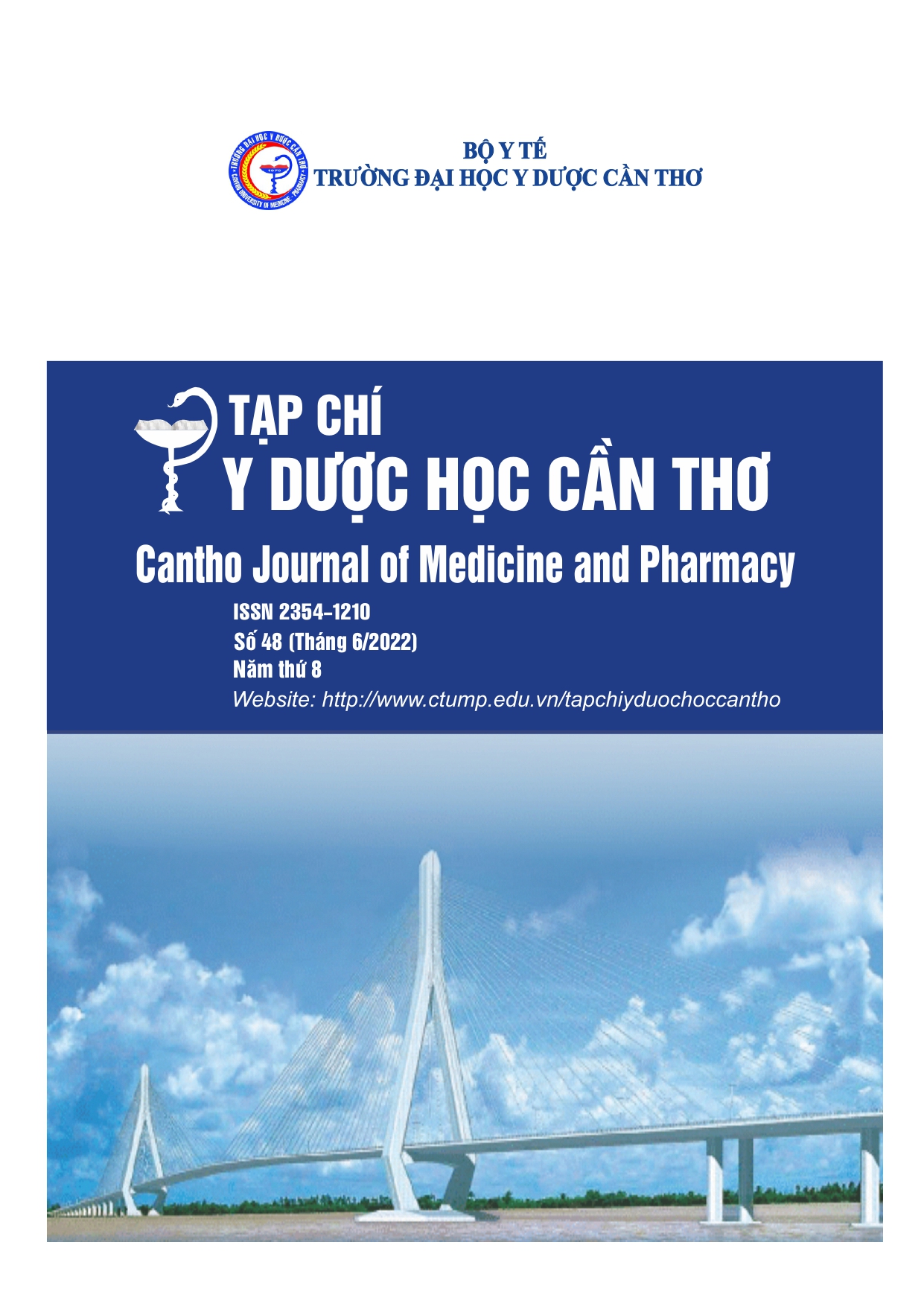CLINICAL FEATURES, SUBCLINICAL FEATURES AND RESULTS OF TREATMENT ALCOHOL WITHDRAWAL SYNDROME AT CAN THO PSYCHIATRIC HOSPITAL
Main Article Content
Abstract
Background: According to a report from the World Health Organization (WHO), alcohol abuse can lead to numerous consequences on mental health and social development in general. Alcohol-related harm affects not only the consumers but also their families and the community they are living in. The evidence suggests that alcohol-related harm impedes social and economic development, increases healthcare costs as well as property damage, and reduces production and quality of life, particularly in developing countries. Objectives: The research aims to describe clinical features, subclinical features and results of treatment for inpatients with alcohol withdrawal syndrome at Can Tho Psychiatric Hospital. Materials and methods: The participants were inpatients with alcohol withdrawal syndrome at Can Tho Psychiatric Hospital. The research was conducted with a cross-sectional study design. Results: The most common clinical features in patients with alcohol withdrawal syndrome are autonomic disturbances (tremor, sweating, tachycardia), visual hallucinations, sleep disturbances, and memory disturbances at a rate of 100%; the most common subclinical features are elevated liver enzymes (85.4%), anemia (83.3%) and thrombocytopenia (79.2%); successful treatment results reached 87.5%. Conclusions: Psychiatric and neurological symptoms are the most common symptoms, and laboratory tests show abnormal liver function due to long-term effects of alcohol. Response of participants to alcohol withdrawal syndrome treatments is very positive, excluding cases with serious comorbidities.
Article Details
Keywords
Alcohol withdrawal syndrome, , CIWA-Ar
References
2. Nguyễn Văn Khoe (2006), “Đặc điểm lâm sàng, cận lâm sàng và điều trị hội chứng cai rượu”, Luận văn tốt nghiệp Chuyên khoa 2, Đại học Y Dược thành phố Hồ Chí Minh.
3. Ngô Tích Linh (2005), “Rối loạn tâm thần do rượu”, Tâm thần học, Đại học Y Dược thành phố Hồ Chí Minh, tr.66-72.
4. Đào Trần Thái (1999), “Khảo sát các trường hợp sảng run nhập viện tại trung tâm sức khỏe tâm thần thành phố Hồ Chí Minh từ 1995-1998”, Luận án thạc sĩ Y học, Đại học Y Dược thành phố Hồ Chí Minh.
5. Phan Văn Tiếng (2015), “Nhận xét kết quả điều trị sảng rượu bằng Diazepam tại Bệnh viện Tâm thần Trung ương 2”, Báo cáo Hội nghị Khoa học Bệnh viện Tâm thần Trung ương 2.
6. Nguyễn Văn Tuấn (2014), “Nghiên cứu lâm sàng và hiệu quả điều trị suy giảm nhận thức ở bệnh nhân loạn thần do rượu”, Luận án Tiến sĩ Y học, Đại học Y Dược Hà Nội.
7. Phạm Lê Tuấn, Nguyễn Nam Liên và Phan Lê Thu Hằng (2017), “Niên giám thống kê y tế”, Nhà xuất bản Y Học, Hà Nội.
8. Kaplan & Sadock's (2021), Synopsis of Psychiatry 12th, pp.624-639.
9. World Health Organization (2014), Global status report on alcohol and health.
10.World Health Organization (2017), Alcohol Policy in the WHO South-East Asia Region: A Report.


